If you’re familiar with e-commerce at all, you’ll know that Amazon is, due to its widespread use and strong conversion rates, an excellent platform for driving substantial sales. And if you’ve ever tried to sell anything on Amazon, you know how crucial it is to find the correct goods.
If you’re on the verge of starting an Amazon business and are thinking about how you can do this, then you’re in luck! This Amazon seller guide will go over some tried and true methods for conducting thorough Amazon FBA product research to increase your sales and profits. Finding successful things to offer, assessing your competitors, and making a listing that converts are all things that we will tell you about!
So, let’s get started.
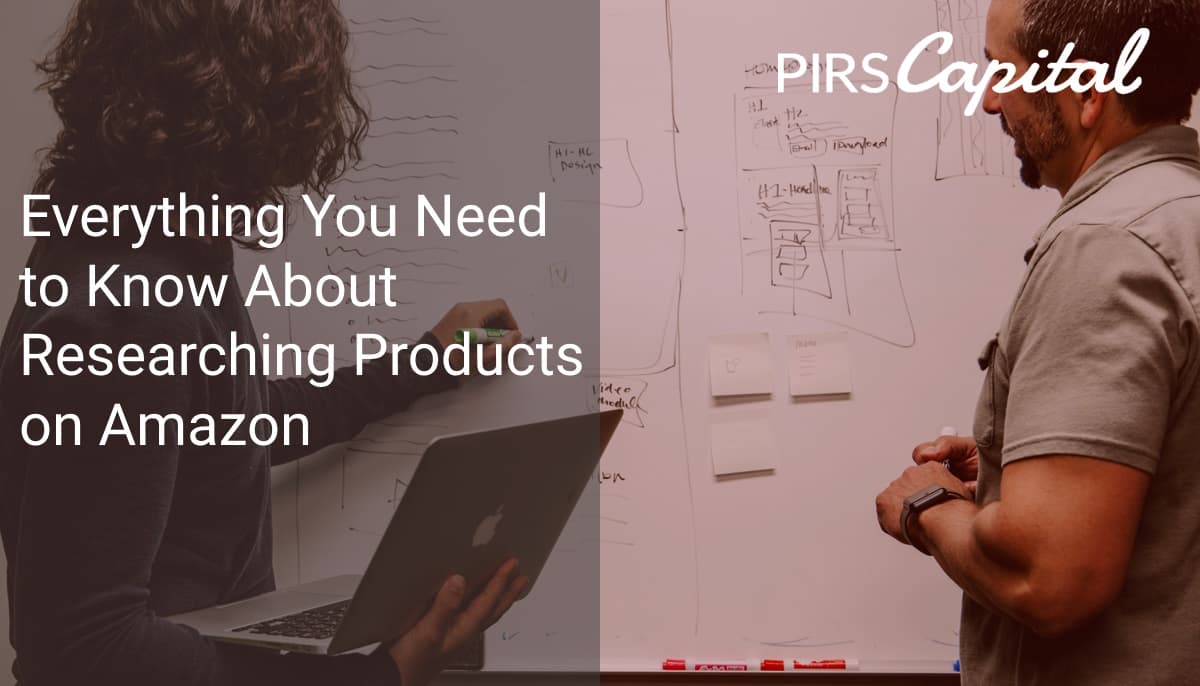
The Importance of Market Research
If you want to make serious money as an Amazon seller, the one thing you must do is research your market. Therefore, it is vital to conduct thorough Amazon product research before devoting one’s life to the platform.
As the Amazon selling procedure can seem daunting to newcomers, they may look into other business models, such as retail arbitrage. However, this really is a normal part of the process for any successful Amazon seller. Choosing the most viable banking product is not as difficult as it may seem.
What Is Amazon Product Research?
Choosing “winning” items, or products that are likely to create high sales, on Amazon is all about researching market trends. The goal is to choose items that have a low acquisition cost but a high potential for resale profit.
FBA product research is meant to provide you with an idea of the product’s potential profitability before you begin selling it on the marketplace. Consider these elements to better grasp the situation:
- Market potential and total product demand
- The nature and extent of the product’s competition, including a list of key competitors.
- What factors are contributing to the product’s growing popularity
- Expenses incurred in acquiring the merchandise
- The profit potential of selling the item
How does this work? For example, you could be able to sell pairs of exercise socks for $2 apiece, but if they are of poor quality, you will likely receive negative comments from customers and see a decline in sales.
Consequently, you should seek out items that not only have a high success rate but also garner praise from customers. The higher rated your products are, the more future customers will be tempted to try you out.
What Is the Importance of Amazon Product Research?
If you don’t invest in honing your research skills, you won’t be able to zero in on products with high profit margins.
If you want to make a living off of Amazon, you won’t have much success if you choose products to sell at random just because you “think” they will sell well. The secret is to sell items that people actually want to buy, rather than something you think they will want to buy.
Specifically, there is no room for speculation or rash choices when running an internet store if you want your own firm to thrive and grow.
Different Ways to Do Product Research on Amazon
Over the past few years, Amazon research has developed significantly. There’s no guarantee that what worked in the past would do so now. That is why, in this section, we will talk about a few tried and tested methods that you can use to do your own research. Here they are:
1. Doing everything manually
If you prefer the hands-on approach, you can use Amazon itself as a helpful tool. There are two things to keep your eyes on:
Look at what’s selling the most
Firstly, take a look at the top sellers. The page that shows Amazon’s top-selling items is a great resource for product information. The reason why you should do this first is because Amazon highlights the goods that are selling the best.
To narrow the scope of your product search, pick a more specific category to search within. Determine which products are selling the most copies of their goods by quickly scanning the listings. If you haven’t already, this will help you narrow your attention to a certain segment of the market.
You can get hints about which products are likely to be favorably received by your audience from a company’s sales figures. Additionally, the related goods could give your company important information about potential new markets to enter.
Choose items with pricing that are neither too high nor too low but are in the middle. Additionally, since there is less competition in the market, there are more opportunities for the goods to be sold.
You can also come up with product ideas by doing the following:
- Checking out the top-selling products on Amazon
- Looking at the most successful sellers
- Amazon Basics
- Researching a few items on Pinterest
- Taking a look at Shopify’s storefronts
- Taking a peek at eBay’s hot searches
- Looking at the “Customers Also Bought” section.
- Product tiers on Amazon
- Examining AliExpress’s top-selling items from the past week
Once you know anything about the market and the product in question, you may check its popularity in a few different ways:
- The Keyword Tool by Google
- The Product Intelligence Module of Sellerapp
- Web search tendencies
Study the competition
The next thing to do is research what other companies are doing to market a similar product. You can easily identify who your main competitors are by perusing Amazon’s Best Sellers page.
You can look at their official website and any product listing pages they may have. The data reveal which products are most popular and why their reviews and ratings are so high.
In addition to this, you may get intelligence about your rivals outside of Amazon by searching for a keyword related to their industry.
You can also see what kind of service they offer by buying the goods from a rival company if the price is right. You may always take a page out of their book and use what you learn to better market your product.
Checking through a product page usually leads to a plethora of novel concepts. It’s easy to become sidetracked when browsing among thousands of options, so be sure you have a firm grasp on your specific needs.
When in doubt, remember to use the following guidelines:
- Browse the best-selling items on Amazon to get some inspiration for your own offering.
- Pay special attention to the data provided in the Sponsored Products, Frequently Bought Together, and Customers Also Bought sections, since these are the most relevant to your goals of stock expansion and product upselling.
2. Bring in a third party to do it for you
You may always employ a product research services firm if you want to uncover the best things to sell on Amazon with no effort. These businesses and individuals can take care of everything for you. They’ll scour Amazon for high-demand products and examine your competitors while you sit back and relax.
This will not only save you a lot of time, but it will also give you confidence that the product you are offering will be well received by your target market.
Hiring a business that specializes in product research requires some forethought. Verify that they have worked with Amazon before commissioning any product research. You may learn more about their service quality by reading testimonials from past clients.
3. Automate the Amazon product research process
Product research on Amazon can be simplified by using one of many available applications. Product demand, supply, and market trends will all be quantified through these software packages. You can’t pick a successful product to market without this data.
As product-analysis methods go, this is among the quickest. These software solutions are useful and efficient. Imagine sitting there and checking the bestseller lists, seeing what’s trending, and examining product criteria, photos, descriptions, bullet points, listings, and competition for hours and hours. It may become a very tedious and frustrating process.
In addition, you will need to determine if the product is in high enough demand and can be easily sold. Is the product something that can only be purchased during the holiday season? How much does shipping cost and how often can I expect a refund? Do buyers expect it to function faultlessly for a long time? Does this require first-rate customer service?
Despite your best efforts, you may not be able to come up with a product idea even after visiting all of the websites, clicking on all of the potential products, entering all of the prices, weight, and other criteria that are mentioned above, visiting all of the competitors, scrolling up and down through all of the products, switching tabs back and forth, and spending countless hours of your life. Which is why you should consider using software for the job.
Among the best computer programs are:
Jungle Scout
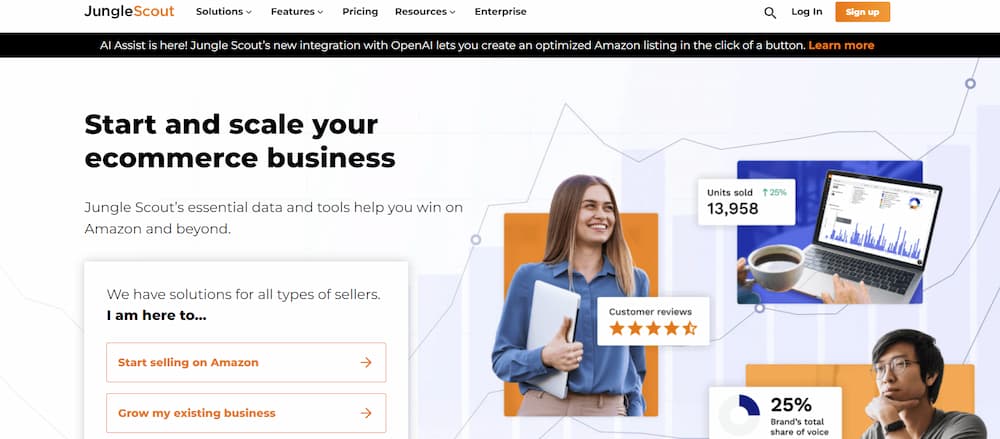
This Amazon research tool has features including tracking the competition, big data analysis, and cost estimations. Use this program to sift through Amazon’s vast selection of products and find the one that works best for you.
This program aids in keeping tabs on your products (and the products of your competitors) as your company grows and develops. The Amazon Chrome extension also allows you to browse the site and filter results based on the criteria that are most relevant to you while researching products.
Jungle Scout is easy to use, too. After you’ve decided on a product, Jungle Scout will put you in touch with legitimate vendors who have been thoroughly investigated.
AMZScout
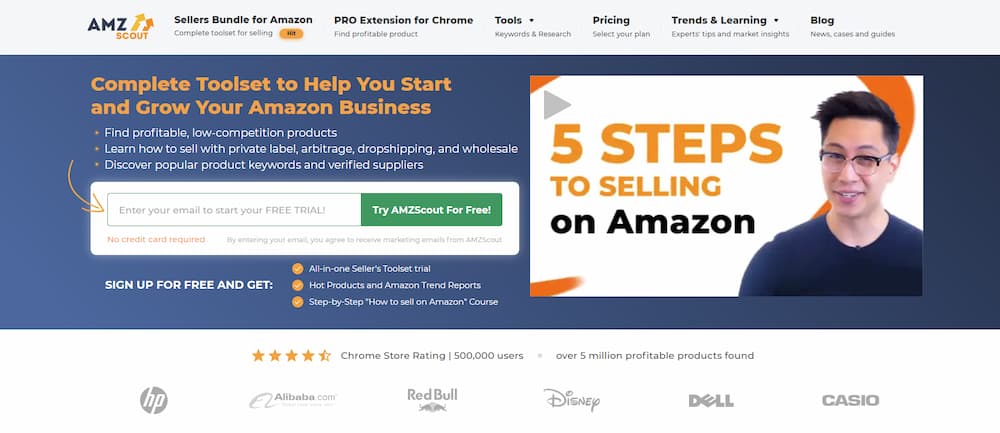
Both AMZScout and Jungle Scout offer similar functionality in their own web apps and Chrome extensions. AMZScout is highly effective at supporting e-commerce businesses in discovering crucial trends.
If you see a certain market segment acquiring a lot of traction, you may use the platform’s tools to evaluate its potential. It’s useful since it lets you know which other sellers are investigating the same market.
AMZScout also provides insights from Google trend data, product sales predictions, FBA charge information, and more.
ZonGuru
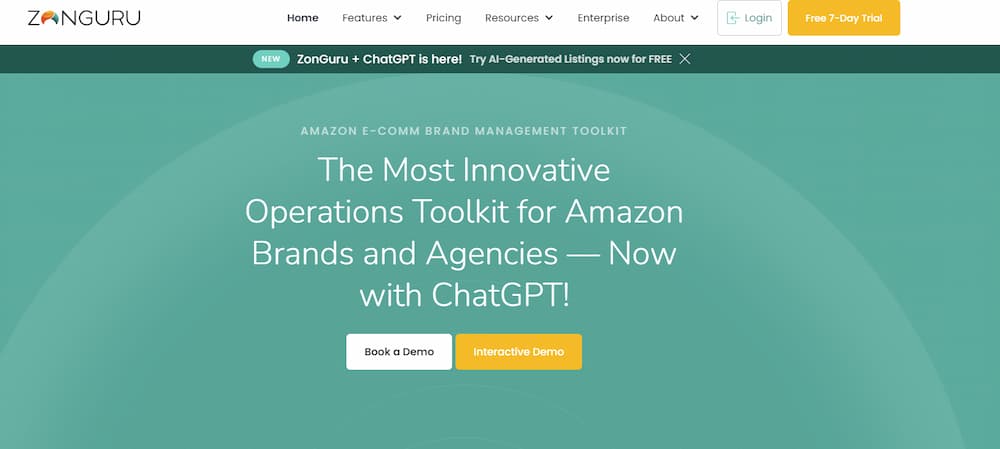
This Amazon seller app offers big data solutions for locating profitable products and researching potential suppliers. ZonGuru’s Niche Finder is a great tool for coming up with new product ideas and finding untapped markets. You can find the best supplier for your items with the help of their powerful Easy Source application.
ZonGuru is fun and accurate and was made for business owners who appreciate learning, tinkering, and automating things.
Helium 10
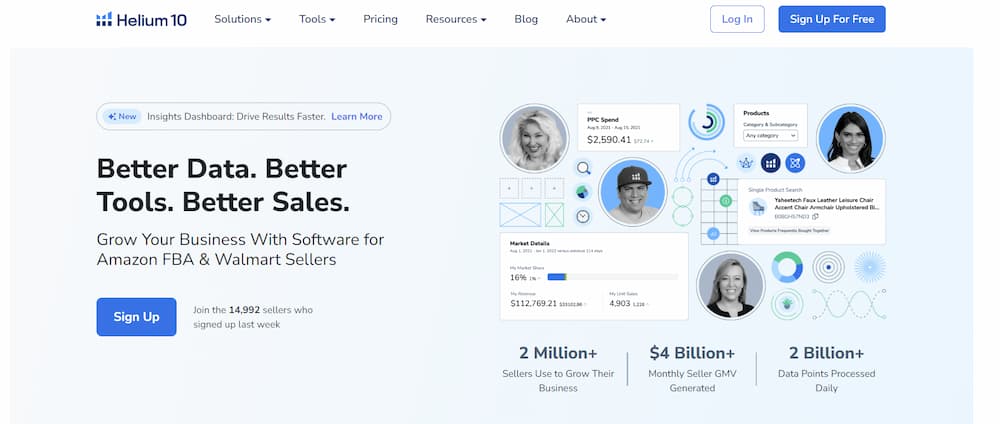
Helium 10 is one of the best Amazon product research tools out there. Their suite of services can help Amazon vendors in any industry achieve an edge.
This program helps Amazon vendors in several ways, including discovering competitive keywords, identifying trends, keeping tabs on competitors, and enhancing product listings. This bundle of Amazon-exclusive tools was developed with the rapid growth of Amazon FBA businesses in mind.
You can subscribe to Helium 10 and gain access to the excellent study materials it provides. Among these are:
- Black Box – This is a research algorithm and product finder
- Trendster – This makes product analysis much easier
- Scrawls – It’s an enhanced merchandise listing optimizer
- Cerebro – This is a great tool for doing keyword research
- Xray – A plug-in for the Chrome web browser, developed by Helium 10
- Refund Genie – A simple tool for managing your reimbursements
SellerApp
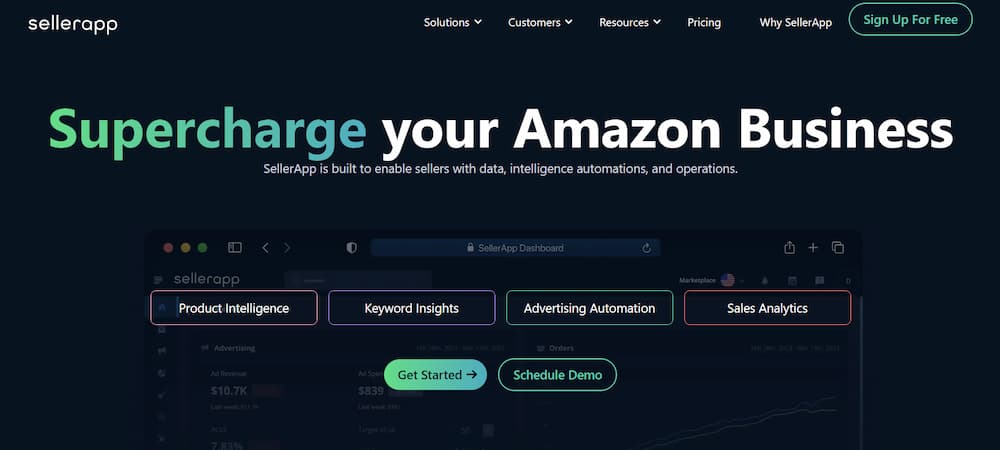
SellerApp’s intuitive interface, instant insights, and cutting-edge shortcuts allow even the most inexperienced user to become a product research pro. The program provides precise information that has been compiled from reliable resources.
The platform integrates a number of tools into one convenient location. SellerApp’s marketing features are comprehensive. The software’s market research features let you find high-demand items with low levels of competition.
More than 300 million data points are gathered daily to provide you with in-depth insights like ratings, sales and income estimates, reviews, and much more. You may also get a quick snapshot of your company’s key metrics and actionable advice for growth via the dashboard.
There are three tiers of membership; however, even the most basic “Pro-Lite” tier provides access to a wealth of features, such as:
- Reassured indexer
- Analyzer for Pay-Per-Click Ads
- Market shifts
- Examining and monitoring keyword trends
- Web Search Engine Optimization
AmazeOwl
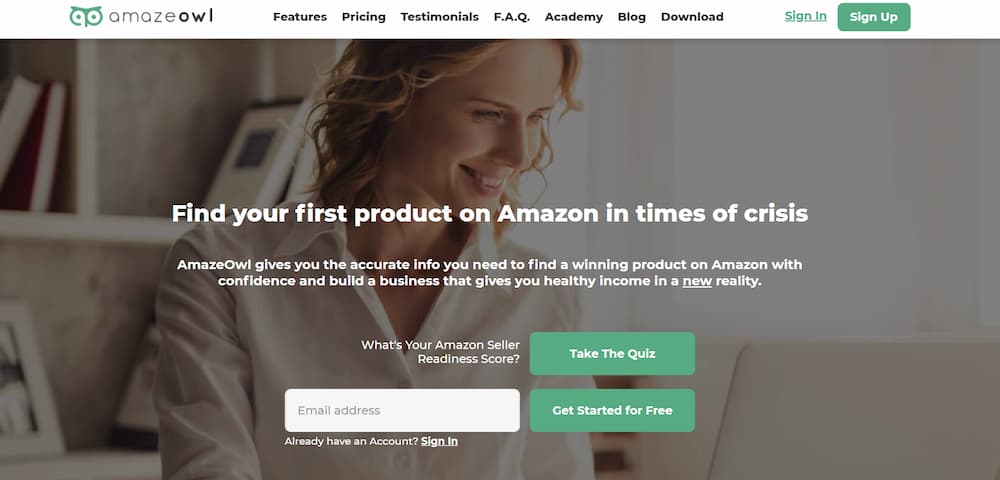
You can use this tool to narrow down your search for the ideal product based on a variety of criteria. Using Amazon’s detailed data, you may release a product with complete assurance.
Over 4,000 Amazon sellers rely on AmazeOwl each month for guidance on finding a profitable product to sell.
Using the technology, new business owners may construct an Amazon enterprise that works for them, saving significant time they would have spent on things like product ideation and Amazon market research.
To find new product ideas quickly, validate and release a winning product, and stay ahead of the competition, Amaze Owl is a fantastic choice.
See Also:
Putting Amazon FBA Product Research Ideas Into Practice
It’s time to put your newfound knowledge to use by putting to use the top Amazon research tools. As you begin your product investigation, keep the following checklist in mind. They are essential in developing a marketable offering:
- Products that cost between $10 and $50
- Products that average ten or more sales per day
- Products in the same market niche must be ranked in the top 5,000 of their parent category’s best sellers.
- Products that can be sold at any time of year (rather than seasonal ones).
- Miniature and lightweight products (under 3 pounds).
- The product must not be easily broken.
- The item should not have any problems passing legal muster.
- No trademarks or brand names are associated with these goods
- You can get the product for at least 25% less than its suggested retail price
- There is lots of room for making listings better and refining products.
- Keywords pertaining to the product can be found in abundance.
- Sourcing the product is fast and simple
- You won’t be competing in a crowded space where your brand’s visibility could be diminished
Categories you should avoid
As a “private label seller,” you should know that not all products are made with the same quality standards. Cameras, photos, paintings, home appliances, etc., that have a lot going on, should be avoided.
Don’t go for items that may cause you trouble down the road, like those that are hard to ship or make. Large-scale product liability, quality control, refunds, and consumer feedback all play a role.
Foods, lotions, creams, nutritional supplements, and other substances that go “in” or “on” your body carry risks as well. Therefore, it is wise to avoid purchasing such items.
On the other hand, categories like footwear and apparel are also noteworthy. Creating a brand from scratch may not be fruitful because consumers are loyal to the brands they already know and trust.
Understanding How to Verify Whether a Product Has Demand
If no one is interested in purchasing your product, it won’t matter how great your product is or how little competition there is. That’s why it’s crucial to have a reliable assessment of your product’s potential sales.
We’ll discuss each of the reliable techniques used to gauge interest in a particular product. These indicators are great for reducing uncertainty throughout the Amazon product research phase.
1. Price
Products in the $15–$50 price range fall into the “impulse buy” category. In this pricing range, the buyer isn’t going to spend much time comparing options. You’re successful if he agrees that the product is a suitable fit for him.
2. Units sold per day
Let’s say you pick a product that costs $30, sells roughly 10 units each day, and leaves me with a $10 profit after deducting Amazon FBA fees, shipping costs, promotion costs, etc.
My monthly income is $9,000 since thirty dollars multiplied by ten units each month.
And if everything works out as planned, I’ll earn $3,000 every month ($10 x 10 units x 30 days).
A higher daily sales volume equates to higher earnings. Products meeting this minimum daily tally are selected based on baseline parameters.
3. BSR
It’s not easy to determine how often a product sells. If you want to know how well a product sells inside its category, the best seller rank is a good proxy for that.
A product with a BSR of 20,000, for instance, will sell significantly less than one with a BSR of 2,000, even if they are in the same category. You probably don’t want to pick a product that does poorly after it reaches the top.
In order to guarantee massive product sales once you reach the top, you need to have three to five products with a BSR score of 5000 or above in the primary category. The market’s prospects improve with an increase in the quantity of low-BSR items.
In the “Pets and Supplies” section of Amazon, you may come across a product with a Best Sellers Rank (BSR) of 17,309. The identical product is also listed in “Basic Collars” with a BSR of 296. Pay close attention to the primary category, which is “Pets and Supplies” above, to arrive at a precise estimate. SellerApp for Amazon product research evaluates both the minimum and maximum demand for a product in its category, allowing you to make more accurate revenue and sales projections.
4. Keyword Searches
Finding out how many people are searching for your goods on Amazon or Google is another crucial step in determining whether there is sufficient client interest in your product. Finding out how much interest there is in your major keywords on Amazon is even more important since studies have shown that the average conversion rate for Amazon is between 12 and 17 percent. If more than 100,000 people search for our top three product keywords on Amazon each month, we know there is a market for our wares.
5. Weight
The FBA fees increase as the shipping weight increases. The product’s profit margin decreases as its size and weight increase. If your item weighs more than 2 pounds, shipping fees will skyrocket. About 9.9 ounces means low delivery costs.
6. First Page Reviews
While the number of reviews on the first page can give you an idea of how competitive your niche is, it’s not a particularly useful rule of thumb, especially in areas where sales are strong. Still, the total number of ratings and reviews can give you an idea of how simple it will be to dominate the charts.
Verifying as many items as possible on the list is ideal. These guidelines are not set in stone, but they are the minimum standards we recommend for a good beginning.
7. Is there perennial demand?
When researching products on Amazon, this is crucial information to have. Is there a time of year in which your product sells particularly well? Is there a steady yearly demand for this item?
The best approach to find out is to visit Google Trends and search for your product’s primary keyword there. There, you’ll learn if your product has limited availability due to the time of year.
It’s not hard to figure out if your product has a peak selling season, but if it does, you should know that before placing an order, or else you risk having unsold inventory sitting in storage. While some people enjoy focusing on seasonal sales, I rather prefer to have steady sales throughout the year.
8. Lack of big brands as competition
It’s no surprise that consumers prefer well-known brands to up-and-coming ones when given the choice. Starting with a product that has less competition is preferable to going after one that is currently dominated by well-established companies.
Things to Avoid Doing While Conducting Amazon FBA Product Research
Now that I’ve covered some of the top resources for researching products on Amazon, I’ll go through some of the things you should never do.
Don’t make your niche too niche
It’s tempting to target a narrow market when you’re just getting started. It’s a bad idea for a few different reasons, even if you think the profit margin is high:
- Because there isn’t a lot of competition, your keyword rankings will suffer.
- Since there are already well-established competitors, it will be difficult for your listing to rise to the top of search engine rankings.
- Since there is so little demand, production of your goods is going to be difficult.
If you want to make money, yet not get lost in the crowd, target a certain subset of the market.
Don’t rush to play with the big boys
A market segment is considered to be highly saturated when there are already a significant number of competitors operating there. Because of this, it may be difficult to differentiate yourself from the other candidates and gain access to the relevant networks. It is essential to find a sweet spot between a market segment that can generate profits and one in which you would be lost in the competition. As such, make a name for yourself before you go mixing with the crowd.
Don’t set prices too low
To get their foot in the door, some new vendors will try to undercut the competition by offering their wares at rock-bottom prices.
But there are many problems with this approach:
- Each sale will probably result in a loss for you. The fees charged by Amazon are often underestimated.
- If your profit margins are too low, you won’t be able to turn a profit.
- Customers who are only interested in price and not in your brand may be drawn to your store. This could lead to criticism or low ratings.
Setting a price that is cheap enough to attract clients but high enough to turn a profit is a delicate balancing act—and one you will need to master if you want to succeed.
Don’t be wrong about profit margins
Inexperienced merchants often make the common error of overlooking profit margins when doing business. It’s a bad idea because:
- You won’t be aware of your true profit margins.
- If your profit margins are too low, you may have to sell at a loss.
- Without knowing your margins, you cannot make educated choices about pricing and inventory.
Many sellers, as was indicated before, fail to account for the accumulating costs of Amazon’s various fees. As a result, knowing your profit margins is crucial for setting prices and choosing inventory.
A Few Closing Words on Amazon FBA Product Research
As you can see, researching products to sell on Amazon is a crucial step in the Amazon sales process. Finding a viable niche and making money in it requires extensive research, which you cannot do without. But if you put in the time and effort, you can discover a lucrative niche and begin earning money on Amazon.
There are several considerations any Amazon seller should make at the outset of product research. You can save yourself a lot of time and energy by narrowing your focus to find a best-selling product using the freely available Amazon research options.
Doing all this will no doubt serve to turn your product into one of the most bought items on Amazon, but don’t forget that you need capital to start anything. Yes, we have furnished you with all the facts you will need to do proper research, and we are now telling you that we are here to solve the problem of capital as well. We at PIRS Capital have been providing easy financing for entrepreneurs for a very long time, helping them get started in this new venture and pushing them toward success. We are more than willing to do the same for you, too!
All you have to do is reach out to us. We will field any questions you have, and show you all the benefits you will get from us. So why wait? Make the decision that will fast-track your way to success as an Amazon seller!

I work with companies that sell products on platforms such as Amazon, Shopify, Walmart, Ebay, Etsy, etc. I understand that every business is unique and thats why I form genuine relationships with owners so I can help them reach their goals and find success through our working capital solutions.
